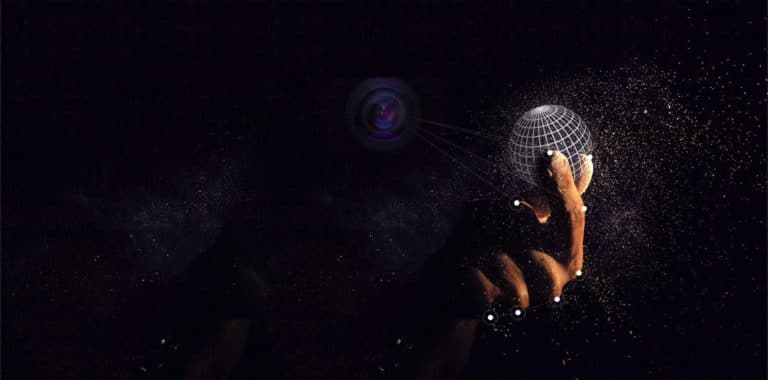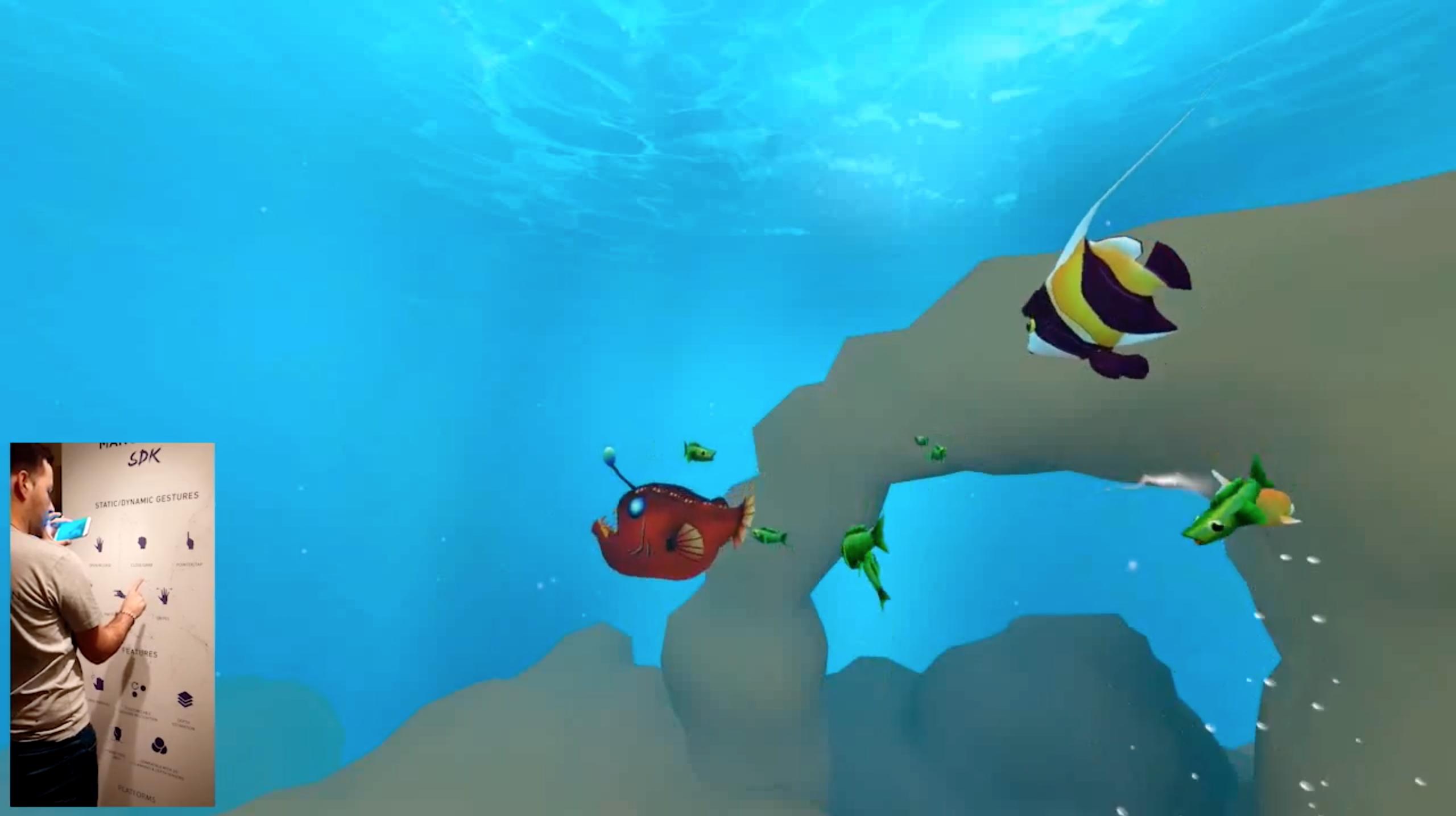
VR’s promise isn’t just about being immersive. It also includes another important “I” word: intuitive. This is the thinking behind virtual human interaction research, and industry voices like Jody Medich.
It’s also one of the reasons that VR controls and input are important. We’re so used to things like keyboards, mice, gamepads and even touch controllers. But the goal is for less of an interface layer between us and the technology.
The holy grail is controlling things with our minds (just ask Facebook). Until then we’re seeing intuitive inputs like hand tracking, as we explored with uSens. That emerging field – also known as gestural tracking — includes Stockholm-based ManoMotion.
“[We] started seven years ago to make technology more intuitive and more natural,” co-founder and CEO Daniel Carlman told ARtillry. “That was the baseline for the research: to find out the smallest possible technical specs to track hand gestures.”
Staying true to that vision, the software today works with smartphones for a lower-barrier hand tracking approach. It also boasts fingertip tracking with one-pixel precision on X and Y axis, and centimeter precision on z axis (depth).

In a Pinch
The use cases are varied, and will partly be a function of what developers build with its SDK, says Carlman. There will be a fair share of gaming apps, where immersive technologies tend to start, but areas like enterprise and medicine will grow.
The company is already receiving inquires from medical institutions for things like stroke rehabilitation. Virtual environments with accurate gestural controls can condition patients to understand how much they can grab with their hands.
But ultimately the technology will apply broadly — everything from enterprise productivity apps to education and training. It’s really anywhere there’s a need for natural inputs to manipulate or interact with digital media.
“We want to be a core functionality on interaction,” said Carlman. “That applies to all menus or selection. By providing the toolsets with basic functionality for pinching, grabbing, swiping, we can support 80 percent of the use cases out there.”
Path to Market
Further amplifying the addressable market is its SDK approach. It works with hardware and chip manufacturers for custom integrations, but the greater path to market will be through developer enablement. This lets its relatively small team cover more ground.
“If we build this in the right way as an SDK, we can provide it to more developers out there on the application side, the hardware side and the chipset side,” said Carlman. “We can scale it much better.” – a comment validated by 500 SDK signups since June.
This involves a freemium model with developer access that’s elevated to paid tiers as they grow with it. It also works with common platforms including iOS, Android and Unity. Windows Mixed Reality, Unreal and ARkit support are next on the road map.

Like GPS
Speaking of ARkit, one attribute ManoMotion shares is compatibility with an existing installed base of hardware. Its computer vision technology for tracking hands works with the most basic (RGB) smartphone cameras according to Carlman.
For instance, the stroke victim example above usually involves shipping bulky hardware, such as a Microsoft Kinnect or other sensor arrays. ManoMotion’s low-barrier smartphone approach makes the technology’s deployment easier.
And its positioning will only strengthen as smartphone optics improve – something we predict will accelerate with a greater push for mobile AR. Recent moves by tech giants validate mobile AR, said Carlman, and plays to the company’s hand.
“We’re happy the market is going in that direction,” he said. “In 1-2 years time, it will definitely be the case that you have depth sensors in most of the mobile devices. It will be more or less [as common as] GPS.”
Hand Language
Developing the right model, timing and tech has positioned ManoMotion well, but is it isn’t without challenges. It’s now trying to strike the right balance of growth, including batching SDK access so it can pace its support. It’s also building up sales & marketing.
“The focus now is on VR, AR applications and OEMs,” said Carlman. “This year has been more about the product, and next year will be about marketing and sales.” The latter will include expanding its satellite team in Palo Alto to tap into the valley’s VR/AR action.
Product and industry development are also priorities. For example, there still aren’t universal 3D gestures across platforms. That will be required to condition users to adopt gestural tracking, and move the industry forward through a common “language.”
“If you look at how you zoom in 3d, some people say grab and pull forward. Some [gesture] like a corkscrew in and out,” said Carlman. There’s no common language, which is both frustrating and rewarding because it’s an open field and you can define new things.”
https://vimeo.com/223048806
For a deeper dive on AR & VR insights, subscribe to ARtillry Intelligence Briefings, and sign up for the free ARtillry Weekly newsletter.
Disclosure: ARtillry has no financial stake in the companies mentioned in this post, nor received payment for its production. Disclosure and ethics policy can be seen here.
Header image credit: ManoMotion
